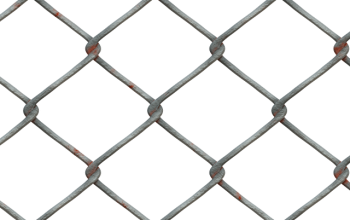In Ontario, defining property lines with farm fences requires understanding local regulations to maintain community harmony and protect landscapes. Landowners must consider permitted fence types, height limits, and distances from road allowances while aligning material, design, and location with by-laws. Traditional wooden post-and-rail or split-rail fences offer durability and aesthetic appeal, serving as functional barriers and historical components of rural landscapes. Choosing the right farm fence involves balancing functionality, aesthetics, local laws, privacy needs, and climate considerations to enhance both land management and the beauty of rural settings.
Ontario farmers and landowners often seek effective ways to define property lines, ensuring clear boundaries and security. This article explores rural fencing options tailored to Ontario’s unique landscape and regulations. From traditional farm fence styles that blend with the bustling agricultural community to modern innovations offering enhanced durability, we guide you through choosing the perfect fit for your land. Discover how these options not only mark borders but also contribute to the overall aesthetic of Ontario’s vibrant farming communities.
- Understanding Ontario's Rural Property Line Regulations
- Traditional Farm Fence Styles for Ontario Farms
- Modern Fencing Innovations for Rural Properties
- Choosing the Right Fence Type for Your Ontario Land
Understanding Ontario's Rural Property Line Regulations
In Ontario, defining property lines is crucial for rural landowners, especially when it comes to installing a farm fence. The province has specific regulations in place to ensure clear boundaries and protect rural landscapes. These guidelines are designed to maintain the integrity of properties while facilitating peaceful coexistence among neighbours. Landowners must be aware of the legal requirements, including permitted fence types, height restrictions, and distances from road allowances, to avoid any legal complications.
Understanding these regulations is essential before investing in a farm fence. Various factors, such as fence material (wooden posts, chain link, or vinyl), design, and location, must align with local by-laws. For instance, while a sturdy wooden fence might be the preferred choice for many, certain areas may restrict its use due to environmental considerations or fire safety protocols. Ontario’s property line regulations aim to strike a balance between individual land ownership rights and community harmony, ensuring that farm fences enhance the rural aesthetic without causing disruptions.
Traditional Farm Fence Styles for Ontario Farms
Rural properties in Ontario often pride themselves on their picturesque landscapes, and one way to preserve this natural beauty is by choosing traditional farm fence styles. These time-honored designs not only serve as functional barriers but also become a charming part of the agricultural landscape. One popular option is the classic wooden post-and-rail fence, which has been a staple in rural Ontario for generations. This style offers both durability and aesthetic appeal, with its sturdy posts and rails creating a balanced and natural divide.
Another traditional farm fence is the split-rail fence, characterized by its stacked logs or timbers that create a distinctive look. This option is not only cost-effective but also blends seamlessly into the surrounding environment, especially in areas with abundant wood resources. These farm fences not only define property lines but also provide a sense of history and character to the farmstead, making them popular choices for Ontario farmers looking to preserve both their land and their heritage.
Modern Fencing Innovations for Rural Properties
Choosing the Right Fence Type for Your Ontario Land
Choosing the right fence type is crucial when defining property lines on your Ontario land. Consider the unique characteristics of your property, such as terrain and climate, to select a farm fence that offers both functionality and aesthetic appeal. For instance, if you have rolling hills, a robust, extended-life vinyl or chain link fence might be suitable due to its strength and ability to withstand varying weather conditions. Alternatively, if your land features beautiful, mature trees, a low-maintenance wood fence could complement the natural landscape while still effectively marking boundaries.
In Ontario, farm fences must also comply with local by-laws, ensuring they meet specific height and material requirements. Additionally, think about your privacy needs and desired level of security. A solid wooden fence provides excellent privacy but may require more maintenance, while a metal or vinyl fence offers durability and reduced upkeep, although it might offer less seclusion. Weigh these factors to make an informed decision that aligns with your lifestyle and property’s unique attributes.
Defining property lines in rural Ontario is an essential aspect of responsible land stewardship. By understanding local regulations and exploring diverse fencing options, from traditional styles to modern innovations, landowners can enhance their properties’ security, aesthetics, and value. A well-chosen farm fence not only marks clear boundaries but also contributes to the overall beauty and functionality of the landscape, ensuring harmony between nature and human development.




